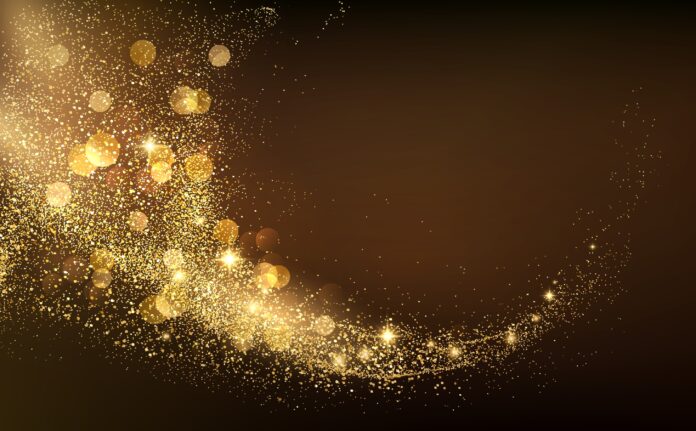One of the great “scientific” endeavors of the Middle Ages was the study of Chrysopoeia, the process of turning base metals such as lead into gold. Most practitioners were doomed to failure but one German alchemist named Sebalt Schwarzer made a single contribution that has stood the test of time.
In his 1585 tome, Chrysopoeia Schwaertzeriana, he describes the synthesis of the world’s first high explosive, a substance known as fulminating gold. This crystalline substance turns almost instantly into a cloud of purple and red smoke in a reaction that travels at supersonic speeds. Hence the high explosive (a low explosive burns at subsonic speeds). Fulminating gold is relatively easy to make but highly unstable, detonated by hear or even touch.
This instability has made it difficult to study. Its crystal structure is poorly understood and even its chemical formula defied analysis until recently. It turns out that fulminating gold is not a specific chemical but a mixture of polymeric compounds of gold, chlorine and ammonia.
There is another puzzle too: the cloud of smoke that fulminating gold produces when it explodes. Nobody is quite sure why it is purple or red. Modern chemists have assumed the smoke is made largely of gold nanoparticles and it has long been used to coat objects with a beautiful purple patina. Chemists know that gold nanoparticles can do the same.
But this is merely circumstantial evidence of gold. What’s needed is clear scientific proof of gold in the smoke.
Gold Standards
Enter Jan Uszko and colleagues at the University of Bristol in the UK who have gathered the first conclusive evidence that the reaction is an explosion of gold. “We show for the first time that the explosion of fulminating gold creates gold nanoparticles, ranging in size from 10 to 300 nm,” they say. They add that their discovery may help to produce better nanoparticles in the future.
The team first made several samples of fulminating gold and placed a carbon-coated mesh over them as they were heated. The resulting explosions deposited smoke particles onto the mesh.
The team then scanned the mesh with a transmission electron microscope and characterized the particles they found.
It turns out that the mesh was covered in nanoparticles between 10 to 300 nm in diameter. The electron microscope images revealed that the crystal planes within the nanoparticles have a spacing of 0.24 nm, which is consistent with gold.
The team then compared the electron diffraction patterns with those theoretically expected and from gold and found close agreement. “This work is proof of the long-supposed nature of the cloud produced on the detonation of fulminating gold,” they conclude.
The purple and red coloring comes from the way electrons on the surface of the nanoparticles interact with light via a process called plasmon resonance. Indeed, other scientists recently showed that gold decoration can sometimes develop purple fringes when nanoparticles form on its surface, as at the Alhambra Palace in Grenada in Spain.
All That Glisters…
The Bristol team say that nanoparticles produced in the explosion have some unique characteristics. Nanoparticles usually form as spheres but become misshapen as they grow beyond a few nanometers in diameter. This happens via a process called Ostwald ripening where small particles dissolve and then regrow onto larger particles. This also reduces the variation in size.
But the nanoparticles from the explosive detonation of fulminating gold have a broad range of diameters that are spherical up to 300 nm in diameter. Uszko and co say that’s almost certainly because the speed of the detonation does not allow Ostwald ripening or other similar processes to occur.
Such large nanospheres are unusual and the explosions suggest a new mode of manufacture. “In this way, larger gold nanoparticles can be created with a sphericity more commonly seen in the early stages of formation when the nanoparticles are small,” say Uszko and co.
That’s interesting work solving an ancient problem. Schwartzer would surely be amazed!
Ref: Explosive Chrysopoeia : arxiv.org/abs/2310.15125
Source : Discovermagazine







